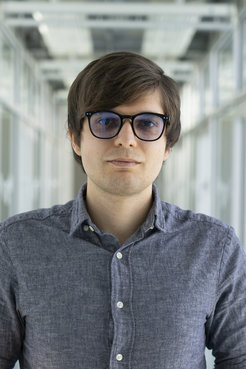Dr. Tsvetomir Ivanov

Tsvetomir Ivanov graduated with a double M.Sc. degree in Chemistry from the Technical University of Hamburg and the University of Chemical Technology and Metallurgy in Sofia, having received a DAAD scholarship. During his undergraduate studies, he wrote his diploma thesis in Prof. Kai Sundmacher's group at the Max Planck Institute for Dynamics of Complex Technical Systems in Magdeburg. His research focused on developing a microfluidics-based method to generate lipid giant unilamellar vesicles and using them as cell-like compartments. In 2020, he joined Prof. Katharina Landfester's department at the Max Planck Institute for Polymer Research as a Ph.D. student, working with the synthetic biology group led by Dr. Lucas Caire da Silva. For his doctoral thesis, he developed a variety of supramolecular systems based on giant vesicles and coacervates. After graduating in 2025, he became the groupleader of the biocondensate systems group within the artificial cell project in Landfester's department.
Research Interests
My research interests lie at the interface of organic chemistry, molecular biology and engineering. My focus of my work is on the development of multi-compartment systems with well-defined hierarchical organisation and function via engineered structural components capable of bottom-up self-assembly for artificial cells/organelles, catalysis, communication and nanomedicine research.
The first aspect of my work primarily explores the development of bio-inspired multi-compartment systems, with a focus on incorporating adaptive behaviours such as growth, division, and motility into bottom-up protocells. Through the creation of dynamic and adaptable block copolymers that respond to external cues like pH, light, and temperature, along with incorporating sub-organelles such as nanocapsules, coacervates, and vesicles, we can understand the importance of compartmentalization in living cells and create robust bioreactor systems. These protocells can mimic the natural structure and organization of eukaryotic cells and thus bridge the gap between materials and life.
The second aspect of my work is focused on exploring liquid-liquid phase separation behaviour by building a library of short peptide-based molecules. Functionalizing such short peptides via covalent bond with molecules such as synthetic catalysists, proteins, polymers, we can explore their physical and chemical properties. Their structure and functionality is analogous to disordered proteins in living cells and can serve as a minimal model system of synthetic organelles. Short peptide-based molecules can be capable of permeating natural and synthetic membranes and establishing communication networks between natural and synthetic cells. This communication can be advanced to include applications in nanomedicine and formation of synthetic cell networks.
